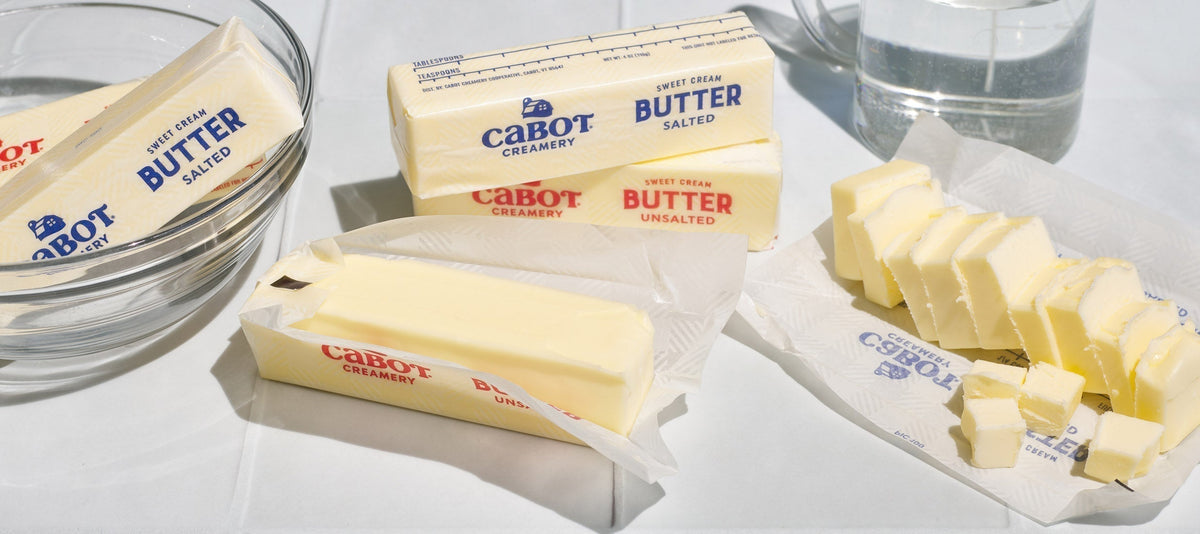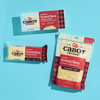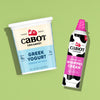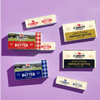
How to Soften Butter Quickly
Butter makes everything better—especially when it’s award-winning Cabot Butter, soft and ready to cream into cookie dough, swirl into batter, or slather onto toast. But what happens when you forget to take your butter out of the fridge? Don’t worry, we’ve all been there (way too many times!).
In this guide, we’ll walk you through how to soften butter quickly using tried-and-true methods and a few clever tricks so you can get back to baking fast.
But first…why does soft butter matter (yes, it really does.)
If you’ve ever ended up with dense cookies, lumpy batter, or frosting that won’t whip, cold butter might be the culprit. Softened butter is essential in many recipes—especially those that start with creaming butter and sugar—because it:
- Creams better with sugar, helping create that light, fluffy texture we all love
- Blends more evenly into batters and doughs for consistent results every time
- Helps baked goods rise properly, thanks to the air incorporated during mixing (hello, dreamy cookies!)
In short, soft butter = better baking. And, when starting with high-quality butter like Cabot’s award-winning sticks, it makes all the difference.
Now that we’ve covered the “why,” let’s get into the “how.”
How to Soften Butter Quickly
Whether you’re an experienced baker or just starting out, these reliable methods will get your butter ready for whatever you have up your sleeve—fast.
Option 1: Room Temperature Method (classic & cubed)
This is the easiest, most foolproof way to soften butter. Just leave the stick of butter on your counter, allowing it to come to room temperature—about 65°F. Usually, this takes about an hour, but you’ll know it's time when it’s soft enough to leave a slight indent when pressed.
Need to speed things up? Slice your cold butter into cubes. The smaller the pieces, the faster they’ll warm up. Spread the pieces out on a plate to maximize surface area, avoiding overlap where possible.

If you have a warmer kitchen or a bit of extra time, you can stop right here. Room temperature will do the work in no time, usually about 30 minutes when butter is cubed.
But if you’re in a hurry, move on to the next step.
Option 2. Warm Glass Trick (a little kitchen magic)
One of our favorite softening tricks uses a glass bowl to simulate the room temperature method, but it helps expedite the process. It’s a gentle way to soften butter without running the risk of overheating and melting.
- Fill a heatproof glass or bowl with hot water. You can microwave a cup or two of water in a bowl for about 3 minutes, or until near-boiling, or add hot water from a tea kettle.
- Let the water sit for a minute, allowing it to heat the bowl, then pour out the water.
- Place your butter stick (with wrapper on) on a plate or counter, then place the warm glass upside down over your butter. You’ll want to move quickly, so the steam and heat from the bowl gets trapped, creating a warm environment to soften your butter.
- After about 10 minutes, your butter will be soft, but not melted. And ready to get baking!

Really crunched for time? There’s one more way to soften butter when every second counts. It’s the fastest method of all—but it requires a bit of extra care. Let’s talk microwave.
Option 3. Microwave Method (handle with care)
Yes, you can soften butter in the microwave, but usually it’s one of our last resorts because it can get tricky. When using the microwave method, you have to take it slow to keep it from melting into a puddle of liquid gold.
- Place your unwrapped Cabot butter on a microwave-safe plate.
- Use the defrost setting or reduce power to 30%.
- Heat in 5-second bursts, turning the butter each time.
- Stop once it feels soft but still holds its shape.
Cabot Pro Tip: Remember, you want that perfect softness to cream into your recipes—not melted. Too much heat makes for melted butter, and melted butter makes for sad, sad cookies. Go slow and watch carefully.

More Methods to Soften Butter Quickly
Grate the Butter
Every cheese lover has a grater lying around, so maybe this is your new favorite method. Grating butter is often used for recipes like scones, biscuits, and pie crusts, but it’s also a grate (see what we did there) way to soften butter quickly. Grating the butter allows air to reach the pieces faster and soften quickly, speeding up your prep time in the kitchen.
Cabot Pro Tip: This is the best choice to use when all you have is frozen butter. Frozen butter is easy to grate, and will soften the quickest with this method. '

Flatten Butter with a Rolling Pin
Want soft butter and a work out? Put your butter between two sheets of parchment paper and start rolling—depending on your mood that day, you can gently roll or pound it flat. Fold it over and repeat until soft.
This method is surprisingly satisfying, and a great way to get your butter ready faster without melting it.
Cabot Pro Tip: Pounding with the rolling pin moves this process along much faster than rolling. Use a spatula to scrape the butter off the parchment paper when done so you don’t lose any precious butter.

The World’s Best Butter is Better
From our cooperative of farm families to your kitchen counter, Cabot butter brings generations of care and craftsmanship to every stick. So next time you’re facing a cold butter situation, you now have a lineup of easy, trusted ways to soften it perfectly and keep your baking on point.
Ready to bake? Try our Greek Yogurt Chocolate Chip Cookies or Blueberry Scones (no butter softening needed for this recipe!)—they’re even better with butter made the Cabot way.
More Cheese Please
Sign up for more helpful articles, recipes and updates from Cabot! Plus get 15% off your first purchase.













